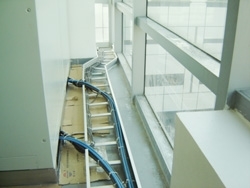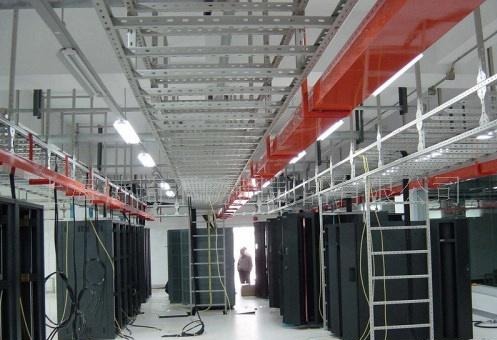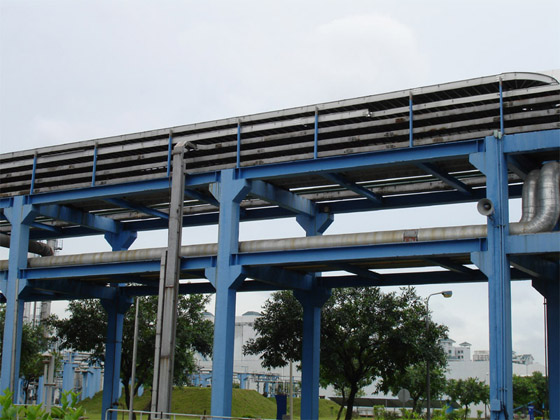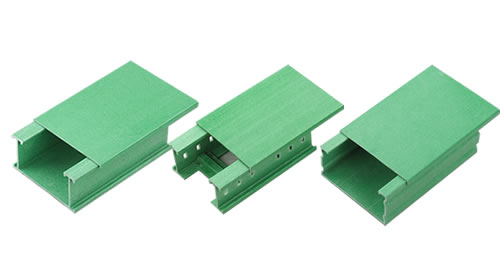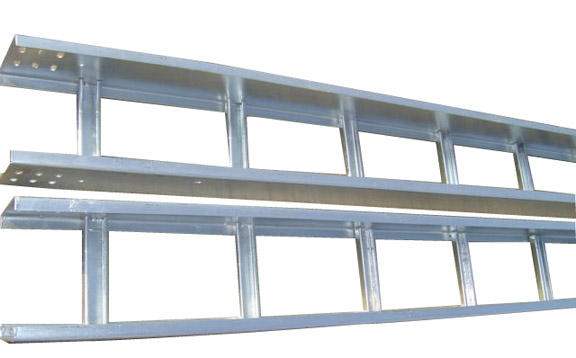多层桥架散热差烧穿屋顶?通风孔设计死磕这 2 点,火灾风险直降 90%!
一、桥架起火现场:电缆像「烤串」一样冒烟
1、 Bridge fire scene: cables smoke like "grilled skewers"
去年某数据中心凌晨突发火灾,监控画面显示:多层桥架内电缆过热起火,火花像烟花一样从通风孔窜出,半小时就烧穿了屋顶。消防员发现:桥架内温度高达 600℃,电缆绝缘层熔化成黏糊糊的「黑油」—— 而这一切的罪魁祸首,竟是通风孔设计不当!
Last year, a data center caught fire in the early hours of the morning. The surveillance footage showed that the cables in the multi-layer cable tray were overheated and caught fire. Sparks burst out of the ventilation holes like fireworks and burned through the roof in half an hour. Firefighters discovered that the temperature inside the bridge was as high as 600 ℃, and the insulation layer of the cable melted into a sticky "black oil" - and the culprit behind all of this was actually the improper design of the ventilation holes!
二、散热差为啥会起火?看电缆的「中暑过程」
2、 Why does poor heat dissipation cause a fire? Watching the 'heat stroke process' of cables
1. 多层桥架 =「密闭蒸笼」
1. Multi layer bridge="closed steamer"
桥架层数越多,空气越难流通,就像叠放的蒸笼,底层电缆被上层「烤」得发烫;
The more layers a bridge has, the harder it is for air to circulate, like a stacked steamer, where the bottom cables are "baked" by the upper layers and become hot;
某工厂实测:3 层桥架比单层温度高 25℃,电缆绝缘层寿命缩短 70%。
A factory has tested that the temperature of a three-layer bridge is 25 ℃ higher than that of a single layer, and the lifespan of the cable insulation layer is shortened by 70%.
2. 热量累积 =「慢炖电缆」
2. Heat accumulation="slow cooking cable"
电流通过电缆产生热量,通风差时热量散不出去,像用小火慢炖电缆;
Electric current generates heat through cables, but when there is poor ventilation, the heat cannot be dissipated, like simmering cables over low heat;
当温度超过 90℃,绝缘层开始软化;超过 130℃,直接碳化起火,某仓库火灾前,桥架表面温度曾测出 150℃。
When the temperature exceeds 90 ℃, the insulation layer begins to soften; Exceeding 130 ℃, it directly carbonized and caught fire. Before a warehouse fire, the surface temperature of the bridge was measured to be 150 ℃.
三、通风孔设计的「救命两要素」:布局 + 孔径
3、 The "life-saving two elements" of ventilation hole design: layout and aperture
1. 布局要像「空调出风口」
1. The layout should be like a 'central air conditioning outlet'
横向通风孔:给电缆「扇扇子」
Horizontal ventilation hole: fan the cable with a fan
关键数据:孔间距≤30cm,像给桥架装「排风扇」,某电子厂把孔间距从 50cm 改成 25cm 后,温度降了 12℃;
Key data: Hole spacing ≤ 30cm. For example, when installing a "exhaust fan" on a bridge, a certain electronics factory changed the hole spacing from 50cm to 25cm, resulting in a temperature drop of 12 ℃;
错误案例:某车间桥架孔间距 80cm,相当于给电缆「戴口罩」,热量散不出去,终引发短路。
Error case: The distance between the bridge holes in a certain workshop is 80cm, which is equivalent to wearing a mask on the cable, and the heat cannot be dissipated, ultimately causing a short circuit.
纵向通风带:造「拔风烟囱」
Vertical ventilation belt: creating a "chimney for air extraction"
设计要点:桥架两侧开长条孔,高度≥5cm,像烟囱一样利用热空气上升原理拔风;
Design points: Open long holes on both sides of the bridge, with a height of ≥ 5cm, and use the principle of hot air rising like a chimney to extract air;
实测效果:某变电站加了纵向通风带后,热空气排出速度提升 40%,相当于给桥架装了「抽油烟机」。
Actual test results: After adding longitudinal ventilation belts to a certain substation, the speed of hot air discharge increased by 40%, which is equivalent to installing a "range hood" on the bridge.
2. 孔径大小 =「窗户尺寸」
2. Aperture size="window size"
圆孔:直径≥10mm 才够用
Circular hole: diameter ≥ 10mm is sufficient for use
小于 10mm 的孔像「针孔」,风根本吹不进去,某机房换了 15mm 孔径后,风速从 0.5m/s 升到 1.8m/s;
Holes smaller than 10mm look like "pinholes", and the wind cannot blow in at all. After changing the 15mm aperture in a certain computer room, the wind speed increased from 0.5m/s to 1.8m/s;
类比:10mm 孔相当于开纱窗,15mm 才像开窗户,通风量差 3 倍。
Analogy: A 10mm hole is equivalent to opening a screen window, while a 15mm hole is like opening a window, with a ventilation difference of three times.
长孔:宽度≥5mm 防积灰
Long hole: Width ≥ 5mm to prevent dust accumulation
宽度太小容易被灰尘堵住,某工厂用 3mm 宽的长孔,半年就积满灰,相当于「通风孔变堵孔」;
If the width is too small, it is easy to be blocked by dust. A factory used a 3mm wide long hole, which accumulated dust in half a year, equivalent to "ventilation holes becoming blocked holes";
正确做法:长孔宽度 5-8mm,搭配防尘网,既通风又防灰,像给窗户装纱窗。
Correct method: The width of the long hole is 5-8mm, and it is equipped with a dust-proof net, which not only provides ventilation but also prevents dust, like installing a screen window on a window.
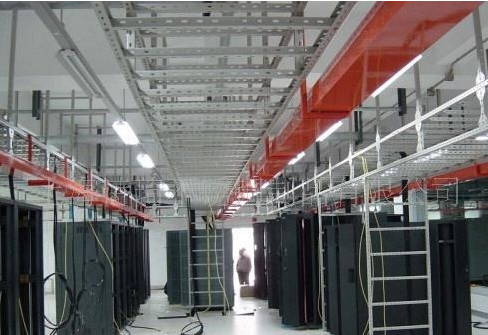
四、通风孔设计的「反常识操作」
4、 Anti common sense operation in ventilation hole design
1. 底层桥架孔要「加倍开」
1. The bottom bridge holes should be 'double opened'
底层电缆被上层「烘烤」,孔密度应比上层多 50%,某汽车厂底层桥架多开 20% 孔,温度比上层只高 5℃;
The bottom cable is' baked 'by the upper layer, and the hole density should be 50% higher than the upper layer. A certain automobile factory has 20% more holes in the bottom bridge, and the temperature is only 5 ℃ higher than the upper layer;
类比:就像房间底层比上层热,空调出风口要多装几个。
Analogy: Just like the bottom floor of a room is hotter than the top floor, more air conditioning vents need to be installed.
2. 孔位避开电缆接头
2. The hole position should avoid the cable joint
接头是发热大户,孔要开在接头正上方 5cm 处,某变电站这样改后,接头温度从 110℃降到 75℃;
The joint is a major heat source, and the hole should be opened 5cm directly above the joint. After this modification at a certain substation, the temperature of the joint decreased from 110 ℃ to 75 ℃;
错误示范:孔开在接头旁边,相当于「电扇没对准人」,散热效果差 60%。
Error demonstration: The hole is opened next to the connector, which is equivalent to "the fan is not aimed at the person", and the heat dissipation effect is 60% worse.
五、真实案例:这些设计救了命
5、 Real case: These designs saved lives
某互联网机房:桥架通风孔按「横向 30cm 间距 + 纵向 5cm 高带」设计,历经 3 年高负荷运行,电缆温度始终≤60℃;
An Internet machine room: the bridge ventilation holes are designed as "horizontal 30cm spacing+vertical 5cm high belt". After three years of high load operation, the cable temperature is always ≤ 60 ℃;
某化工厂:将圆孔从 8mm 扩到 15mm,搭配防尘网,桥架火灾风险评估从「高危」降到「」;
A certain chemical plant: expanded the circular hole from 8mm to 15mm, equipped with dust-proof nets, and reduced the fire risk assessment of the bridge from "high-risk" to "safe";
某物流仓库:底层桥架多开 30% 孔,夏季高温时电缆温度比上层仅高 3℃,避免了因散热差引发的停工事故。
A certain logistics warehouse: 30% more holes are opened in the bottom cable tray, and the cable temperature is only 3 ℃ higher than the upper layer during high temperatures in summer, avoiding shutdown accidents caused by poor heat dissipation.
六、避坑指南:3 招验收通风孔合不合格
6、 Guidelines for avoiding pitfalls: 3 methods for checking whether ventilation holes are properly closed or not
手测风速:把手贴近通风孔,能明显感觉到风(风速≥1m/s),某劣质桥架几乎没风,摸上去像铁板烧;
Hand measured wind speed: Hold your hand close to the ventilation hole and you can clearly feel the wind (wind speed ≥ 1m/s). There is almost no wind on a certain poor quality bridge, and it feels like teppanyaki to the touch;
测温枪扫瞄:运行 2 小时后,桥架表面温度≤50℃,某问题桥架温度高达 80℃,摸一下能烫红手指;
Scanning with temperature gun: After running for 2 hours, the surface temperature of the bridge is ≤ 50 ℃. For a certain problem, the temperature of the bridge is as high as 80 ℃. Touching it can burn your fingers red;
看积灰情况:合格的通风孔半年积灰厚度≤1mm,某工厂孔太小,3 个月就积了 5mm 灰,相当于「通风孔变堵孔」。
Check the dust accumulation situation: The qualified ventilation holes have a dust accumulation thickness of ≤ 1mm within six months. In a certain factory, the holes are too small, and 5mm of dust has accumulated in three months, which is equivalent to "ventilation holes becoming blocked".
本文由山东电缆桥架友情奉献.更多有关的知识请点击:http://www.sdhangfeng.com真诚的态度.为您提供为的服务.更多有关的知识我们将会陆续向大家奉献.敬请期待.
This article is a friendly contribution from Jinan Cable Bridge For more information, please click: http://www.sdhangfeng.com Sincere attitude To provide you with comprehensive services We will gradually contribute more relevant knowledge to everyone Coming soon.



